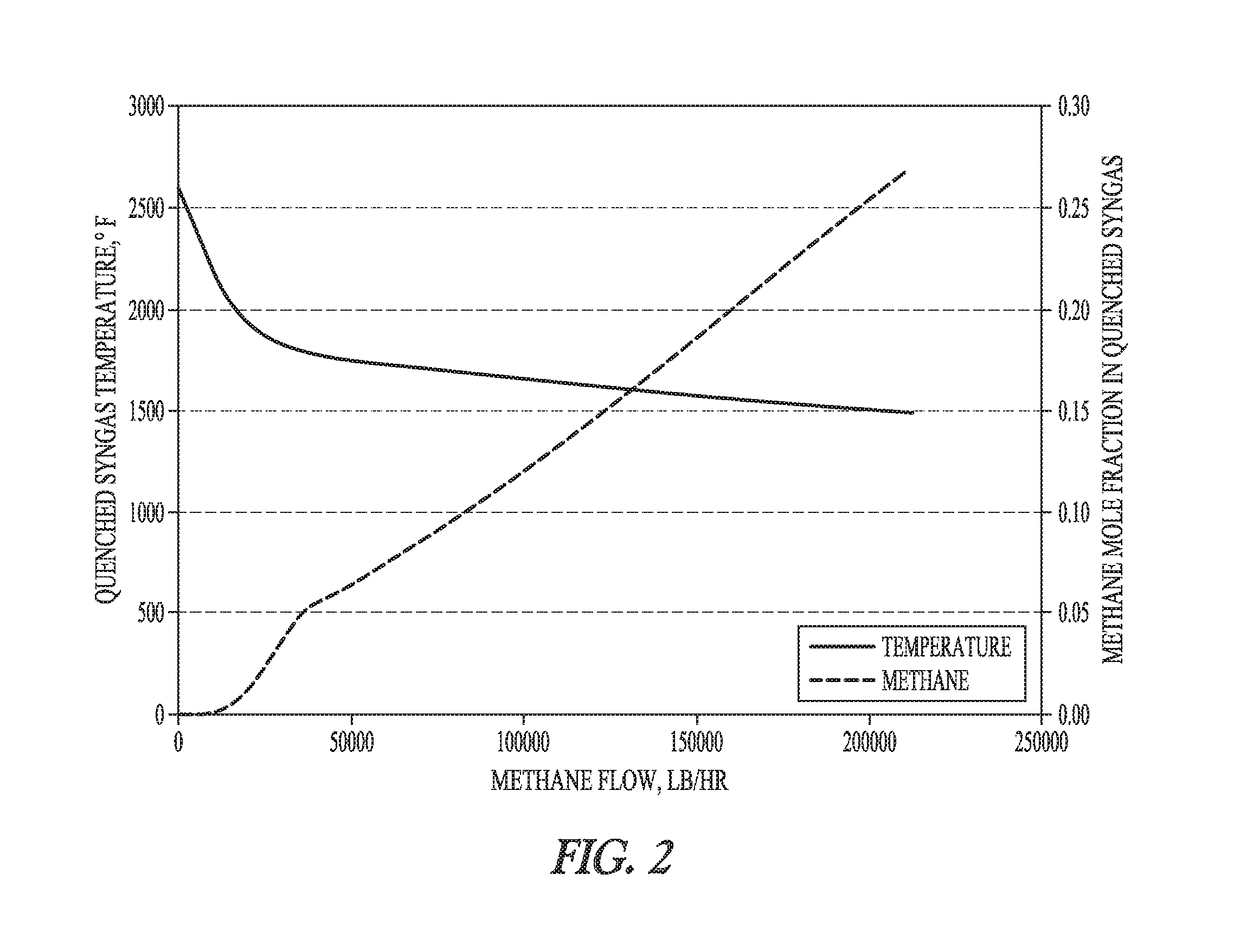Cooling syngas via reaction of methane or light hydrocarbons with water
a technology of methane or light hydrocarbons and syngas, which is applied in the direction of combustible gas catalytic treatment, combustible gas production, pressurized chemical process, etc., can solve the problems of downtime in commercial gasification systems, achieve more efficient syngas generation, avoid ash-handling problems, and reduce downtime
- Summary
- Abstract
- Description
- Claims
- Application Information
AI Technical Summary
Benefits of technology
Problems solved by technology
Method used
Image
Examples
example 1
[0045]Aspen Plus® software was used to model the reaction of syngas with pipeline quality methane and shale gas to determine the amount of cooling that is feasible without having excess introduction of hydrocarbons into the gas stream. Tampa Electric's Polk Power Station integrated gasification combined cycle (IGCC) facility was used as the modeling basis for this study. A model was built in Aspen Plus that represents a simplified entrained-flow gasifier and quench system, illustrated in FIG. 1. No catalytic influences were considered in this model.
[0046]General Conditions.
[0047]The fuel feed rate, oxygen flow rate, and water feed rate were determined according to published operational estimates at the Polk Power Station IGCC. The facility is a 250-MW net power station, with a nominal coal feed rate of 2200 tons / day, oxygen feed rate of 2171 tons / day, and slurry water feed rate of 972 tons / day. Pittsburgh No. 8 was used as the coal for the study. The exit temperature was also set ba...
example 2
[0053]Using Aspen Plus® software, a computer model was designed. Inputs from a commercial GE gasifier at Tampa Electric's Polk Power Station integrated gasification combined cycle (IGCC) facility were used to model the syngas quality at the entrance of the quench section. FIG. 6 illustrates the results, and shows the level of cooling that can be achieved utilizing methane with and without catalytic influences. The data are presented as a weight ratio of the methane input compared to the coal feed rate in the gasifier. In the noncatalytic case, the steam methane reforming reactions are driven forward to achieve temperatures of approximately 1950° F. After this point, additional cooling achieved is almost exclusively from the heat capacity of the methane. In the catalytic case, cooling below 1200° F. is achieved with a methane to coal ratio of about 0.22. Simplified assumptions were used in this modeling effort, in line with the General Conditions of Example 1.
[0054]The terms and expr...
PUM
| Property | Measurement | Unit |
|---|---|---|
| temperature | aaaaa | aaaaa |
| temperature | aaaaa | aaaaa |
| temperature | aaaaa | aaaaa |
Abstract
Description
Claims
Application Information
 Login to View More
Login to View More - R&D
- Intellectual Property
- Life Sciences
- Materials
- Tech Scout
- Unparalleled Data Quality
- Higher Quality Content
- 60% Fewer Hallucinations
Browse by: Latest US Patents, China's latest patents, Technical Efficacy Thesaurus, Application Domain, Technology Topic, Popular Technical Reports.
© 2025 PatSnap. All rights reserved.Legal|Privacy policy|Modern Slavery Act Transparency Statement|Sitemap|About US| Contact US: help@patsnap.com



